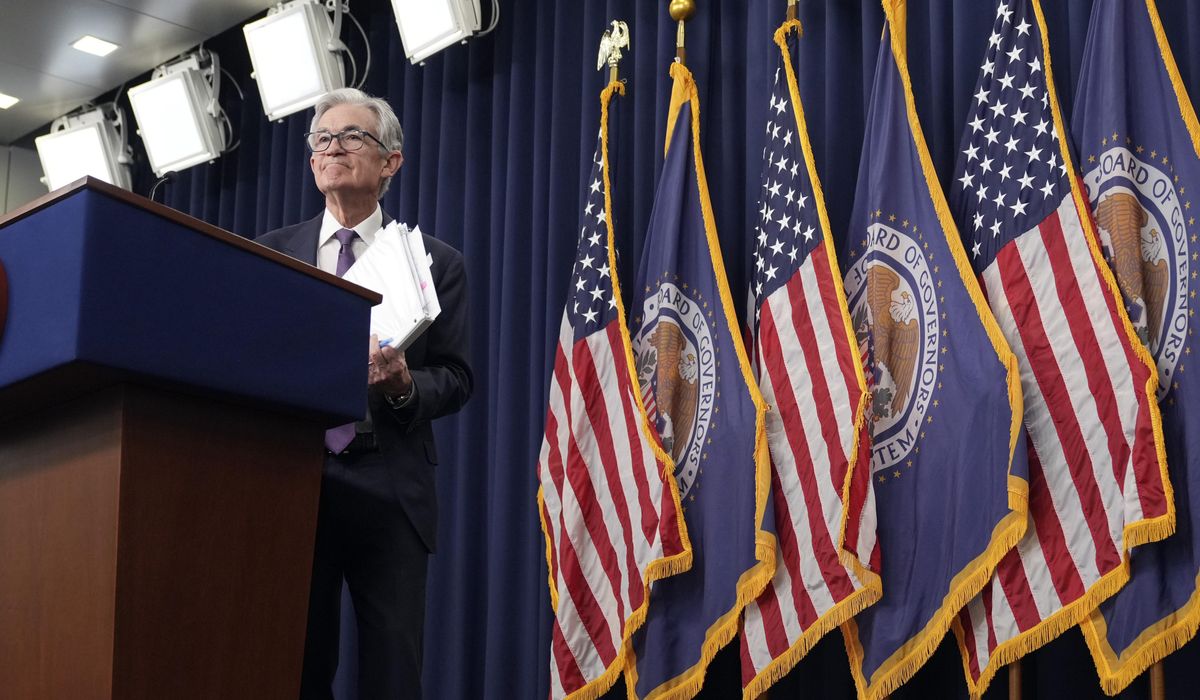


The Federal Reserve is expected to pause its series of interest rate cuts at its first meeting of the year this week, despite pressure from President Trump to continue lowering rates.
Fed officials will meet for a two-day meeting that starts Tuesday and ends Wednesday to decide the pace of rate cuts this year. Wall Street analysts expect the Fed to keep interest rates unchanged, after lowering them at each of their last three meetings.
Since last year, the Fed has cut interest rates by roughly 100 basis points, or 1 percentage point. Currently, interest rates — the cost of borrowing money by consumers through bank loans and credit cards — sit between 4.25% and 4.5%.
The lack of action is sure to vex Mr. Trump, who last week hectored Federal Reserve Chairman Jerome H. Powell, demanding he slash interest rates.
“With oil prices going down, I’ll demand that interest rates drop immediately, and likewise they should be dropping all over the world,” Mr. Trump said in a video message to the World Economic Forum in Davos, Switzerland.
Later, in the Oval Office, Mr. Trump told reporters that he understands interest rate policy better than Mr. Powell, adding that he’d speak to the Fed chairman “at the right time.”
Mr. Powell said in December that the Fed will move cautiously in 2025, saying there is “uncertainty” surrounding Mr. Trump’s economic policies, including the threat of tariffs, the extension of his tax cuts, and the impact mass deportations will have on the labor market. He said all of that will need to be factored into the Fed’s policies on rate hikes.
“We don’t know what’ll be tariffed from what countries, for how long and what size,” Mr. Powell said. “We don’t know whether there will be retaliatory tariffs, we don’t know what the transmission of any of that will be to consumer prices.”
Neither the White House nor the Fed responded to requests for comment.
After spending much of the Biden administration raising interest rates to combat shockingly high inflation, the Fed lowered them last year in an effort to bolster a sagging labor market. However, inflation remains stubbornly high, still hovering above the Fed’s 2% target goal.
Inflation in December rose to 2.9%, according to year-over-year data by the Bureau of Labor Statistics. The Consumer Price Index, the most commonly cited measure of inflation rose 0.4% from November to December. However, prices for housing and rent — two key drivers of inflation — are easing.
The central bank’s rate hikes during the Biden administration are credited with helping to lower inflation from a peak of 9.1% in the summer of 2022.
For Mr. Trump, there is little he can do to influence Fed policy besides using the presidential bully pulpit. A president does not have the authority to fire a Fed chairman, though that has never been tested in the courts. Mr. Powell, who was appointed by Mr. Trump in 2017, can step down when his term expires in May 2026, but he could remain on the board until early 2028.
In addition, there are no vacancies on the Fed’s seven-member board. The earliest vacancy would be in January 2026 when the term of a fed governor, Adriana Kugler, expires.
The last time Mr. Trump was in the White House, he repeatedly clashed with Mr. Powell over interest rates and threatened to fire him multiple times.
• Jeff Mordock can be reached at jmordock@washingtontimes.com.
